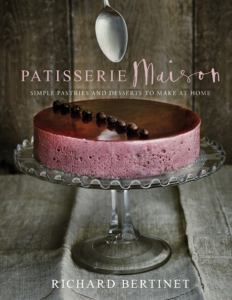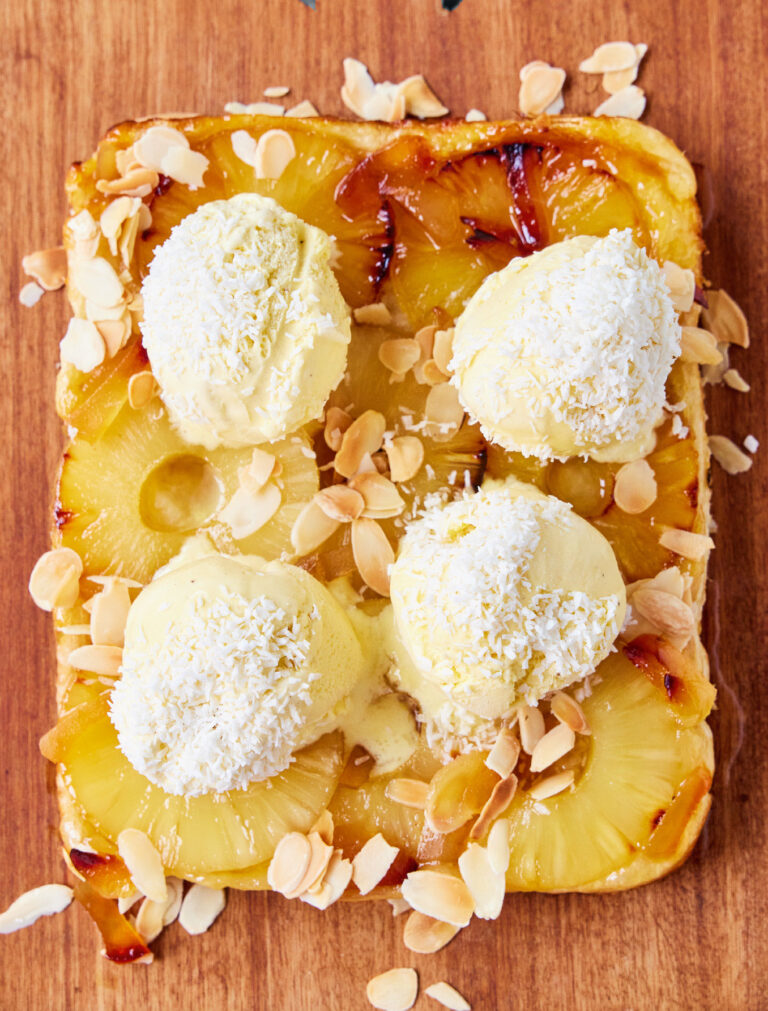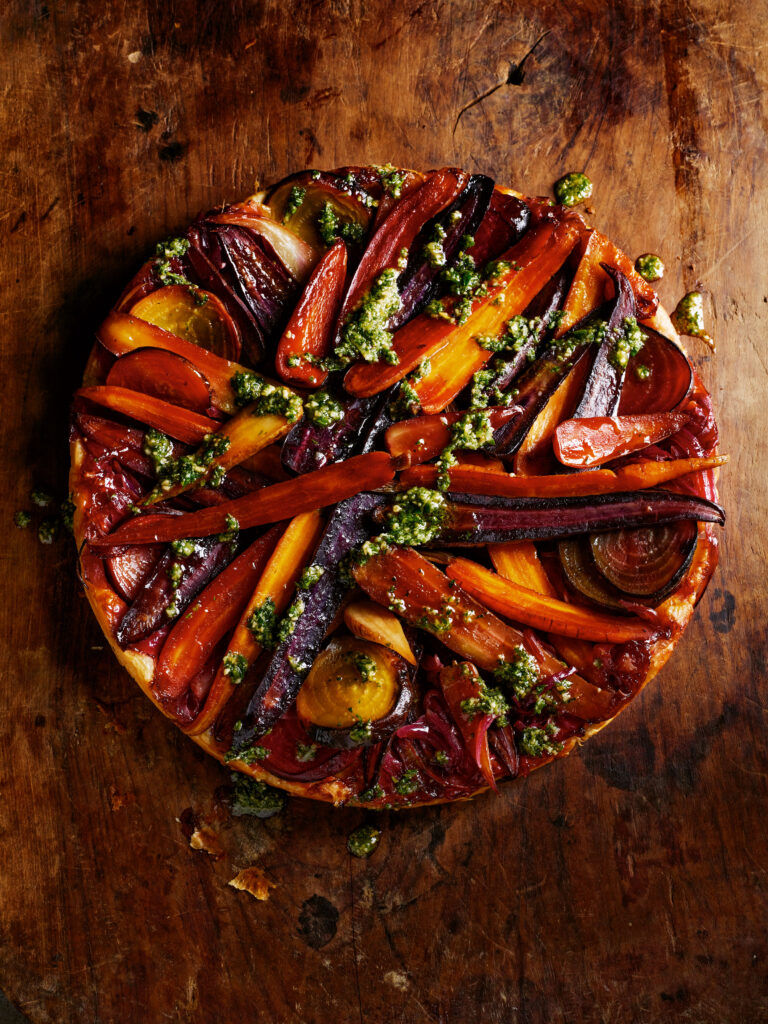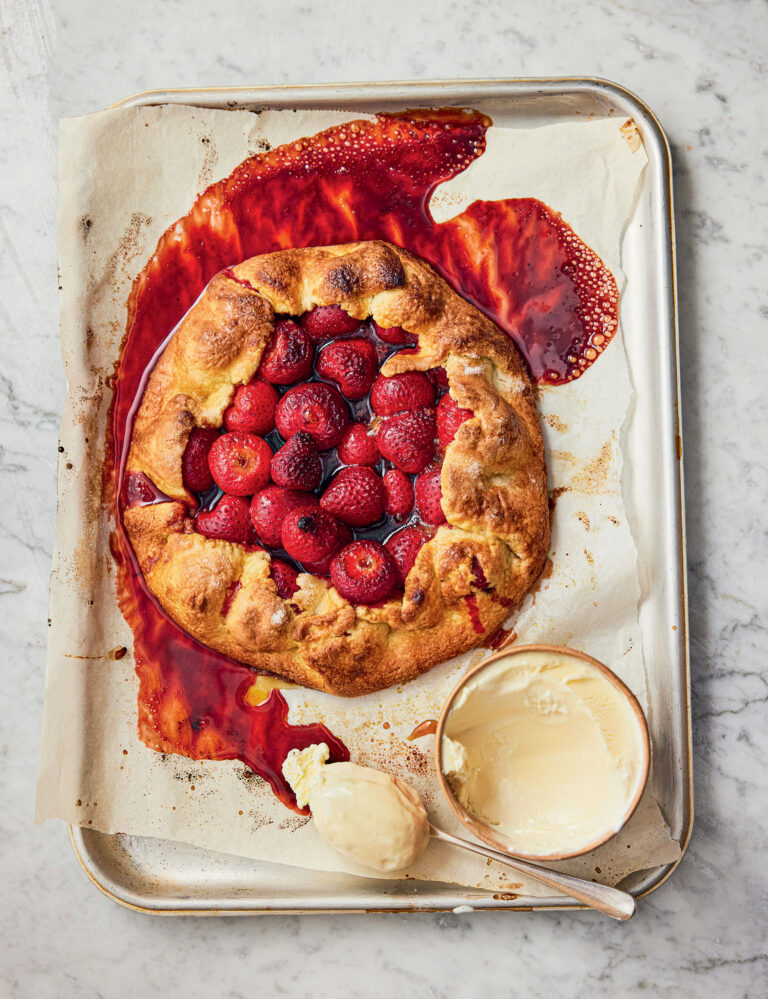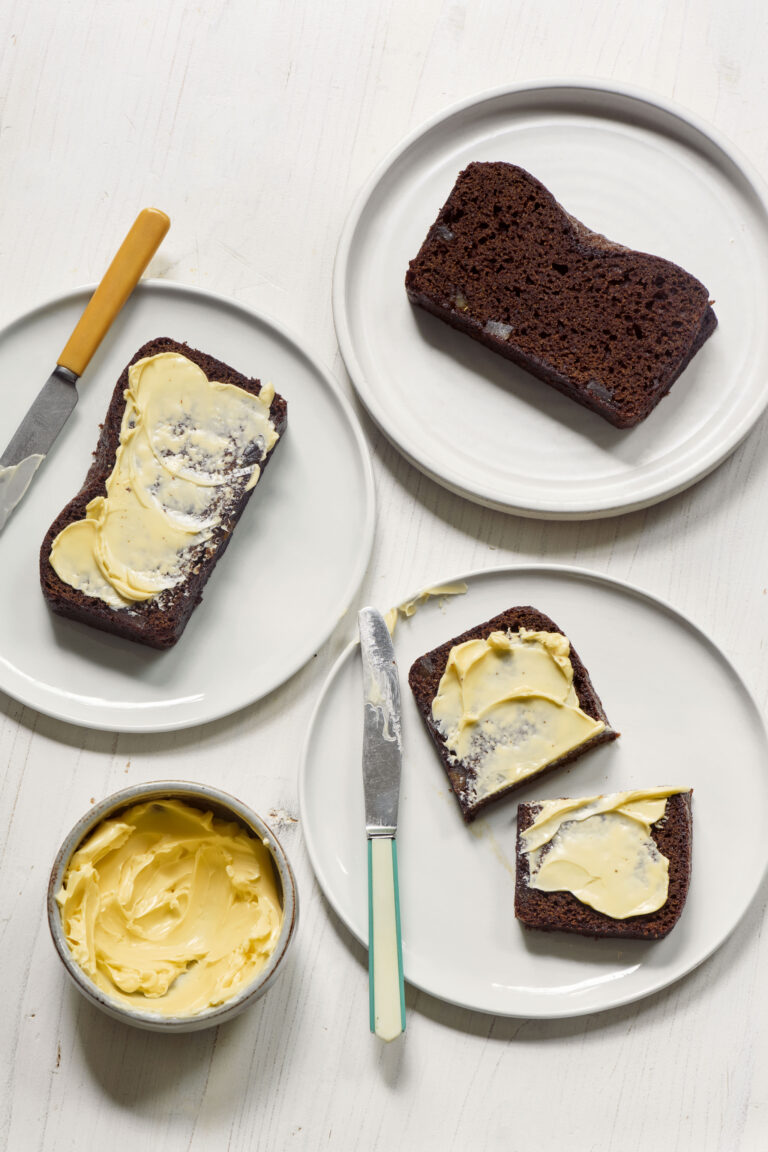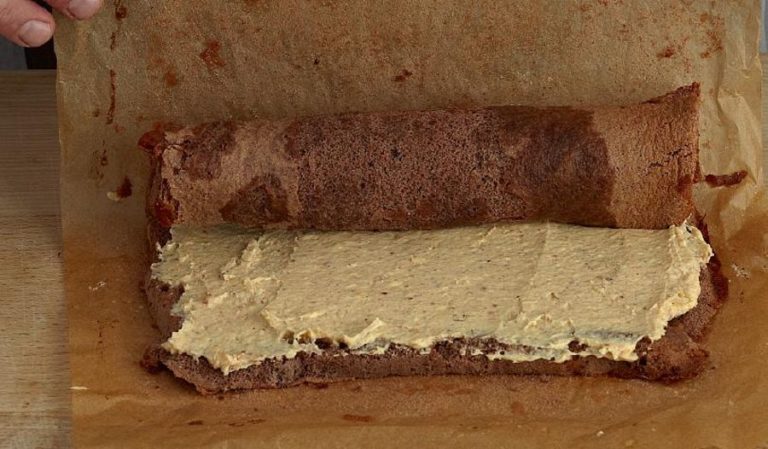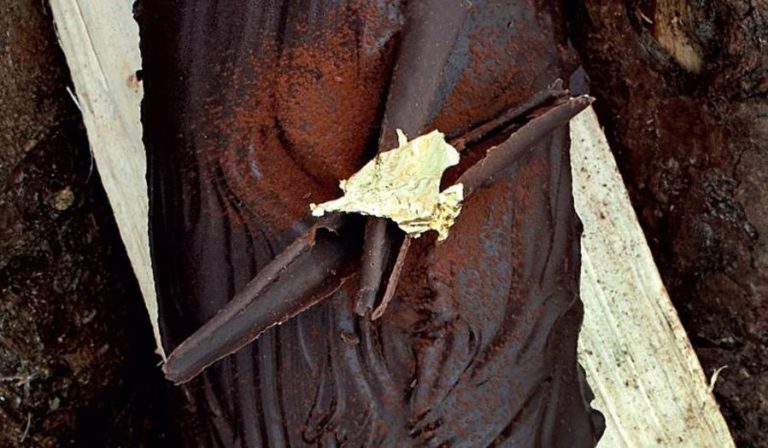Blood Orange Tart
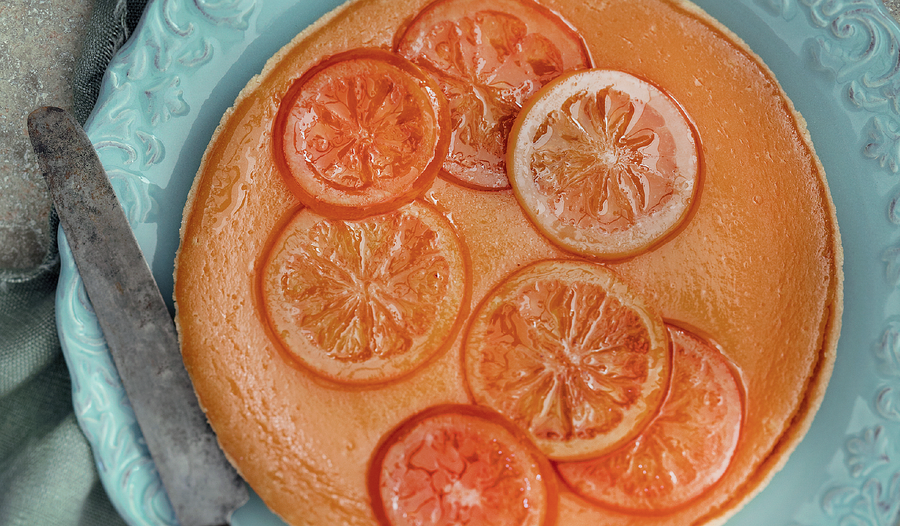
This citrus filled tart harmonises sharp blood orange with sweet shortcrust pastry. The blood orange dessert recipe is finished with caramelised oranges.
Introduction
Blood oranges have an almost grapefruity flavour, but when they are not in season, you can use bought blood orange juice, plus the zest of three ordinary oranges. You could dust the top of the tart with icing sugar after baking, and caramelise it with a blow torch, however it looks quite special if you decorate it with slices of caramelised oranges. If you like, you can make more than you need and pot them while still hot into sterilised jars, where they will keep for several months.
Ingredients
| Sweet pastry (see link to ingredients and method below) | |
| Butter or baking spray, for greasing the tart tin | |
| A little | flour, for rolling |
| 6 | medium eggs, plus 1 medium egg beaten with a pinch of salt |
| Zest and juice from around 3 blood oranges (you need 250ml of juice) | |
| 400g | caster sugar |
| 250g | unsalted butter |
| 1 tbsp | cornflour |
| For the caramelized orange decoration: | |
| 100g | sugar |
| 200 ml | water |
| 1 | blood orange or ordinary orange, cut crossways into thin rounds (about 5mm) |
Essential kit
You will need a 20cm loose-bottomed tart tin, a rolling pin and a set of baking beans.
Method
First make your pastry. You will need half the quantity described here but return to the method below once the pastry is ready to roll out and bake.
Lightly grease a 20cm loose-bottomed tart tin with butter or baking spray.
Lightly dust your work surface with flour, then roll out your pastry into a circle 5mm thick and large enough to fit into the tin, leaving an overhang of about 2.5cm.
Roll the pastry around your rolling pin so that you can lift it up without stretching it, then drape over the tin and let it fall inside.
Ease the pastry carefully into the base and sides of the tin without stretching it, and leave it overhanging the edges. Tap the tin lightly against your work surface to settle it in. Prick the base of the pastry all over with a fork to stop it from trying to rise up when in the oven (even though it will be held down by baking beans, it can sometimes lift a little).
You can use a large sheet of baking paper for lining your tart case, however I prefer to use clingfilm (the kind that is safe for use in the oven or microwave) as it is softer than paper and won’t leave indents in the pastry. Place three sheets of clingfilm (or one sheet of baking paper) over the top of the pastry case, then tip in your baking beans and spread them out so they completely cover the base. Don’t trim the pastry yet. Put the case into the fridge for at least one hour (or the freezer for 15 minutes) to relax it.
Pre-heat the oven to 190C / gas 5.
Remove the pastry case from the fridge and put in the pre-heated oven for about 20 minutes until the base has dried out and is very lightly coloured, like parchment.
Remove from the oven and lift out the clingfilm (or baking paper) and beans. Don’t worry if the overhanging edges are quite brown, as you will be trimming these away after you have finished baking your tart.
Brush the inside of the pastry case with the beaten egg and put it back into the oven for another ten minutes. The inside of the pastry, and particularly the base, will now be quite golden brown and shiny from the egg glaze, which will act as a barrier so that the pastry will stay crisp when you put in the filling.
Let the pastry case cool down then you can trim away the overhanging edges.
Turn down the oven heat to 120C / gas ½.
To make the filling, whisk together the orange zest and juice, the eggs, sugar, butter and cornflour in a bowl, then place over a pan of barely simmering water, making sure the base of the bowl doesn’t actually touch the water. Whisk constantly over a low heat, moving the mixture around the bowl well, so that none sticks to the sides.
Once it starts to become a little thicker than double cream, continue to whisk for one more minute then take off the heat. To test that it is ready, scoop a little bit of mixture with a teaspoon and push it against the inside of the bowl towards the top. It should stay where it is without dripping. If it doesn’t, put it back over the heat and whisk briefly for another minute at a time, until it passes the test.
Pour into the pastry case and bake in the preheated oven for about 15 minutes or until the filling is set.
Leave to cool for a couple of hours to room temperature before eating.
Meanwhile, for the caramelised oranges, make a syrup by putting the sugar in a pan with the water and bringing it to the boil. Reduce the heat and simmer until the sugar has dissolved and you have a colourless syrup. Turn the heat as low as possible.
Put in the orange slices and let them poach very gently in the syrup for a good hour at least. Take off the heat, cool and drain off the syrup before arranging on top of the tart.
Reviews
Have you tried this recipe? Let us know how it went by leaving a comment below.
Thank you for your rating. Our team will get back to any queries as soon as possible.
Please note: Moderation is enabled and may delay your comment being posted. There is no need to resubmit your comment. By posting a comment you are agreeing to the website Terms of Use.
